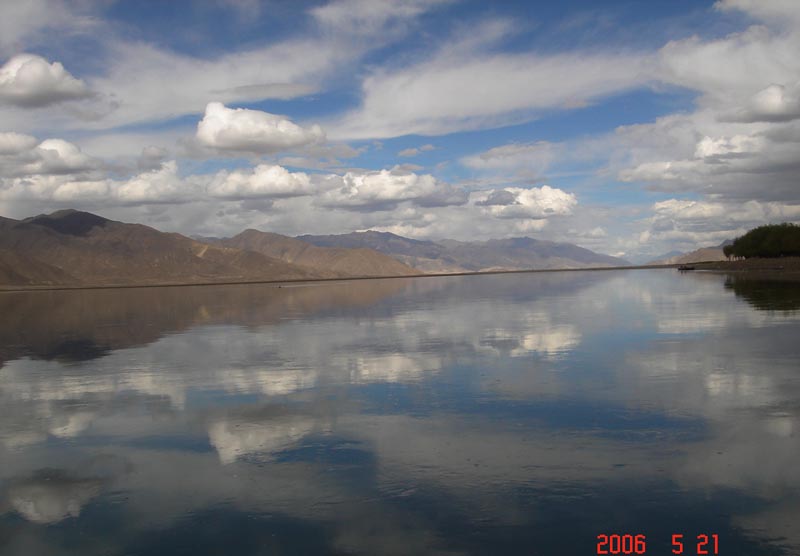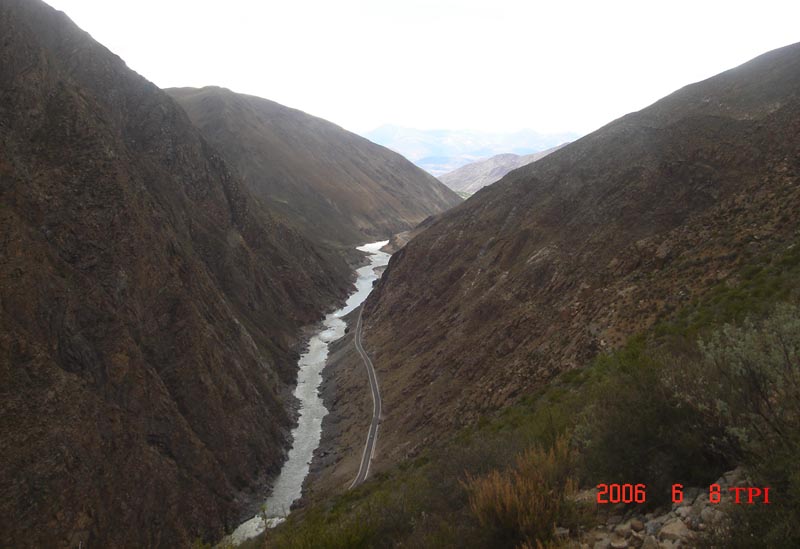 The Brahmaputra River, or the Yarlung Tsangpo as it is known in Tibet, is the latest target of China's hydroelectric plans. The planned dam is set to be the largest in the world, greater than the Three Gorges Dam in China, and will be part of a 540 megawatts (MW) power generation project due for completion by December 2015. According to several media reports there are 28 other dams either planned or currently construction along the Yarlung Tsangpo, though China are yet to confirm these.
The Brahmaputra River, or the Yarlung Tsangpo as it is known in Tibet, is the latest target of China's hydroelectric plans. The planned dam is set to be the largest in the world, greater than the Three Gorges Dam in China, and will be part of a 540 megawatts (MW) power generation project due for completion by December 2015. According to several media reports there are 28 other dams either planned or currently construction along the Yarlung Tsangpo, though China are yet to confirm these.The Gezhouba Corporation, responsible for the project, is among China's largest construction and engineering companies. The General Manager of China's Hydropower Engineering Consulting Group has stated that Tibet's resources "will be converted into economic advantage", however some reports (denied by China) have claimed that water may in the future be diverted from the river to areas of drought in southwest China. This would create knock-on effects in India and Bangladesh, reducing the flow of water in the parts of the Brahmaputra that run through them.
The Yarlung Tsangpo source lies at a height of 4,000 metres in southwestern Tibet, at the Jima Yangzong glacier and flows in an easterly direction for 1,600km through Tibet. Before entering India as the Siang River in Arunachal Pradesh, the river takes a massive u-turn named the ‘Great Bend'. It is in this most easterly Indian state where there is a confluence of the Siang, Dibang and Lohit rivers, forming the Brahmaputra. The Brahmaputra passes through India in its middle sector through Assam, leading on to Bangladesh, its lower riparian, where it converges with the river Ganga to create the largest delta in the world, before reaching its mouth at the Bay of Bengal. A huge proportion of river runoff from Tibetan rivers, approximately 90 per cent, flows further downstream to many countries such as India, China, Bangladesh, Nepal and Pakistan. Interfering with the natural flow of river water in Tibet will thus have repercussions for other nations.
Backed by Jairam Ramesh, the Minister of State for Environment and Forests, India has recently stated that it would not stand for any future Chinese plans to intervene with the Brahmaputra River for both political and ecological reasons. Ramesh had expressed particular concern over the lack of a "water-sharing treaty", something that latest reports suggest is in the process of being created. It will constitute an agreement between the two nations to share all information concerning hydro-electric projects on the Brahmaputra. Furthermore the Minister insists that India must quicken its own hydroelectric plans in the Brahmaputra basin, so that India's bargaining position with China is strengthened. The diplomatic process of negotiation is predicted to be a slow one, as recently experienced with the issue of sharing glaciological data which was delayed last year because of Chinese reservations.
 Reports on the 5th of May from the Indian External Affairs Minister, Somanahalli Malliah Krishna, show that China has expressed that the planned project in Zhangmu would "not in any way impact the river's downstream flow" in India. Krishna revealed that Chinese Foreign Minister, Yang Jiechi, had assured him during his latest visit to Beijing that China was always responsible in its actions regarding trans-border water politics. Yang had also insisted that the plans for the river were to generate hydroelectric power and not to store the water or regulate its volume, thus not affecting the river flow in Indian territory.
Reports on the 5th of May from the Indian External Affairs Minister, Somanahalli Malliah Krishna, show that China has expressed that the planned project in Zhangmu would "not in any way impact the river's downstream flow" in India. Krishna revealed that Chinese Foreign Minister, Yang Jiechi, had assured him during his latest visit to Beijing that China was always responsible in its actions regarding trans-border water politics. Yang had also insisted that the plans for the river were to generate hydroelectric power and not to store the water or regulate its volume, thus not affecting the river flow in Indian territory.Although at the moment China insists that the Zhangmu project only concerns hydroelectricity, there are fears over possible future hydro-engineering projects further on the Tsangpo at the Great Bend. There are concerns that China may divert water in this area as part of the South-to-North Diversion Scheme. The scheme would be used to irrigate arid areas in the north where over a third of the population lives, yet less than a tenth of the country's water resources is found. A dam would be built at the Great Bend and water from China's southern rivers as well as from Tibet's Tsangpo would be diverted in a northerly direction along three routes; the western route could have detrimental ecological and hydrological effects in India and Bangladesh. This would also lead to further complications with India's own hydroelectric plans in Arunachal Pradesh and a potential north-to-south irrigation scheme to bring water to drier areas in southern India. Indian authorities have said that slow progress on their own hydro plans have been due to inadequate funding, protests and bureaucratic impediments, whereas China does not partake in public negotiations and has both the financial and technological resources available to them to pursue their projects.
It was only recently that China admitted its plans for the Zhangmu dam, denying the project for many years previously. This has led to Indian suspicion regarding future Chinese water plans, despite China's strong denial of any water diversion projects. Other concerns raised regarding the suitability of such a large project in the area have highlighted the seismic instability of the region, which could prove devastating if dams were built.

No comments:
Post a Comment